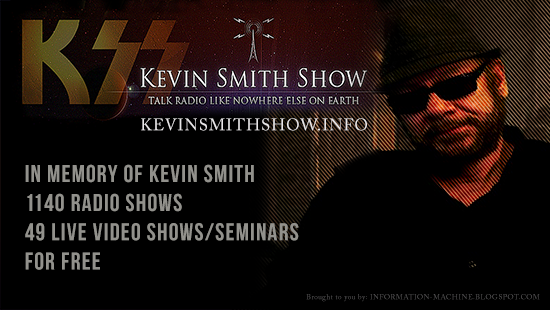Description:
Yes, DMT Aliens Might be Real: Graham Hancock in conversation with neuroscientist Andrew Gallimore about "the world's strangest drug".
Is DMT perhaps better understood not as a drug but as a molecular technology giving access to other realms and other sentient entities very different from ourselves? In this interview with Graham Hancock, and in his new book Death by Astonishment, Andrew Gallimore makes the case for this extraordinary possibility.
Key Points
-
What is DMT?
- DMT is a plant-derived molecule, widely found in nature, described as the most efficient tool for instantly replacing normal reality with a bizarre, coherent world teeming with advanced, non-human intelligent beings. Gallimore calls it the “world’s strangest drug.”
- Discovered in 1956 by Steven Szára in yopo, snuffs, and ayahuasca, DMT is present in countless plants, with Dennis McKenna noting “nature is drenched in DMT.”
-
Biological and Evolutionary Context
- DMT’s simplicity (two enzymatic steps from tryptophan) contrasts with its profound brain effects. Its evolutionary role is unclear, possibly deterring insects, but no definitive studies confirm this.
- Limited research on non-human brains (e.g., apes in the 1950s–60s) shows DMT’s effects, but animals can’t report experiences.
-
DMT vs. Other Psychedelics
- DMT, psilocybin, and LSD (tryptamines) act on the serotonin 5-HT2A receptor, creating a fluid, entropic brain state. DMT uniquely constructs a new, detailed, coherent world, unlike the morphing reality of other psychedelics.
- Entity encounters are more common with DMT, though high-dose psilocybin can be similar. Terrence McKenna’s “death by astonishment” quote, inspiring the book’s title, captures DMT’s overwhelming impact.
-
Ayahuasca and Indigenous Knowledge
- DMT is not orally active alone; Amazonian peoples combined DMT-containing plants (e.g., chacruna, chaliponga) with Banisteriopsis caapi (MAO inhibitor) to enable ayahuasca’s psychoactive effects.
- Indigenous cultures view ayahuasca as a pharmacological technology to access real, non-human intelligences (e.g., Ashaninka’s maninkari), often dismissed as myths by Western anthropologists.
-
DMT and Alien Intelligences
- Gallimore proposes DMT connects humans to a vast, possibly interdimensional, non-human intelligence, rooted in millennia of shamanic interactions. Entities like the Yanomami’s hekura (elf-like) or insectoid beings resemble modern “machine elves” or abduction accounts.
- Hancock notes cultural lenses shape encounters (e.g., fairies in folklore, aliens today), suggesting a consistent phenomenon interpreted differently.
-
DMTX Research
- DMTX, developed by Gallimore and Rick Strassman, uses intravenous infusion to maintain stable DMT levels, extending experiences beyond smoked/vaped DMT’s 10–15 minutes, unlike ayahuasca’s hours-long journey.
- Unlike therapeutic-focused psychedelic research, DMTX explores consciousness and entity interactions. Studies include a pilot at Imperial College (12 volunteers, 30 minutes), Basel (90 minutes), and potential work in San Diego. Volunteer Carl Smith encountered consistent entities across sessions, suggesting a persistent reality.
- A new DMTX research center in St. Vincent and the Grenadines (Eleusis, New Nautics) will offer a nurturing setting, with Hancock interested in volunteering despite epilepsy concerns.
-
Scientific and Cultural Challenges
- Gallimore critiques materialist reductionism, arguing neural activity patterns (e.g., increased brain sensitivity, vision-like activity with closed eyes) don’t fully explain DMT’s reality. He debunks hallucination/dream explanations, leaving room for discarnate intelligence theories.
- Western science lacks a framework for these experiences, unlike shamanic traditions. Skeptics dismiss DMT entities as pseudoscience, ignoring indigenous perspectives.
-
Implications and Risks
- Recognizing DMT entities as real could shift humanity’s view of reality, challenging our perceived dominion. DMT is a democratic tool, accessible via plants, but psychologically intense.
- Risks include emotional overwhelm, especially for those mentally fragile or on antidepressants (e.g., serotonin syndrome). Hancock advises thorough research, comparing DMT use to skydiving or scuba diving, noting its physiological benignity when used cautiously.
Conclusion
Gallimore’s Death by Astonishment argues DMT is a molecular technology revealing interactions with discarnate intelligences, echoing indigenous wisdom. Combining neuroscience, pharmacology, and shamanic insights, he posits DMT offers a lens into consciousness and reality, urging careful exploration. Hancock praises the book as a vital contribution, building on his work (Supernatural/Visionary), and highlights respecting indigenous knowledge to understand DMT’s potential.


































